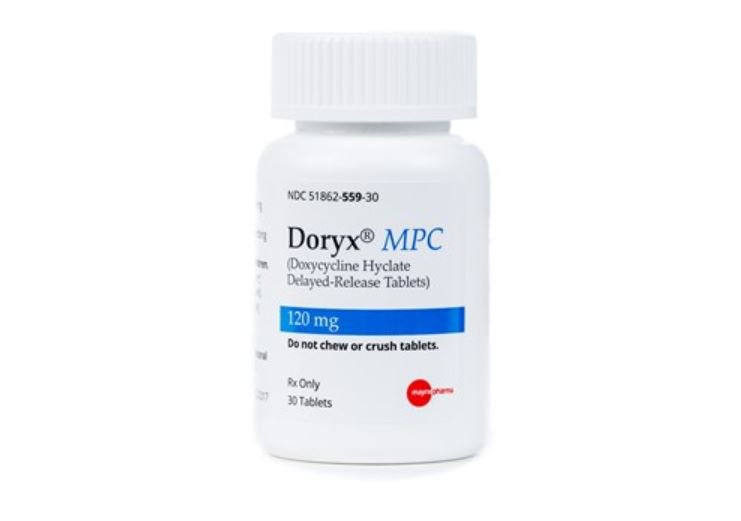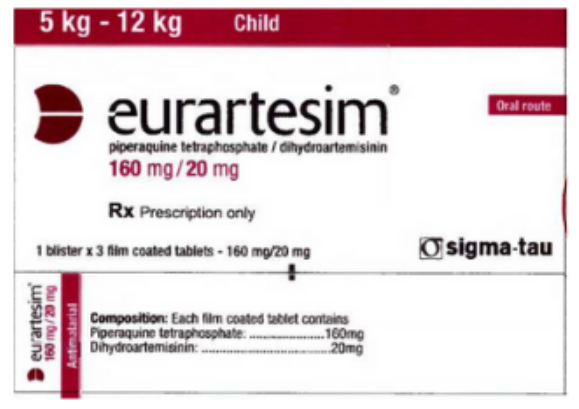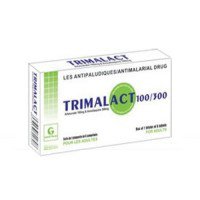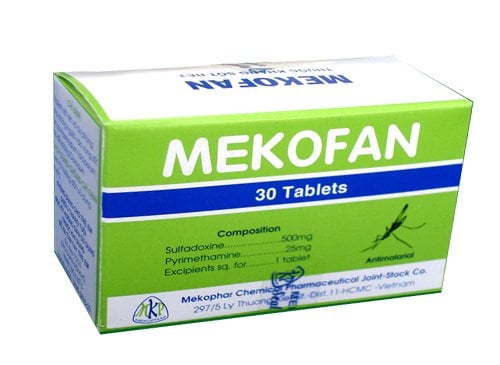What causes malaria to return?
This is an automatically translated article.
In fact, there are cases where a patient has a fever again after being treated for malaria at medical facilities and discharged home. The cause of recurrent malaria is often due to improper treatment according to prescribed guidelines.
1. Malaria Overview
Malaria is a blood-borne infectious disease caused by malaria parasites that are transmitted from sick people to healthy people through the Anopheles mosquito. There is also a secondary mode of transmission, which is through blood transfusion and the mother-to-child transmission through the placenta. The disease circulates in each region and can become epidemic.
There are 4 species of malaria parasites that cause disease in humans:
Plasmodium falciparum; Plasmodium vivax; Plasmodium ovale; Plasmodium malariae. In Vietnam, two common parasites are P. falciparum and P. vivax. In which, the prevalence of P. falciparum was higher in the mountainous and coastal areas of the South (from Phan Thiet onwards), while P. vivax accounted for the majority in the brackish water plains and coastal areas from Phan Thiet onwards. .
Answering the question "Does malaria recur?", the doctors said that the incomplete and improper treatment will cause malaria to recur from time to time. This makes many patients misunderstand malaria as a chronic disease that is difficult to cure.
There are 4 species of malaria parasites that cause disease in humans:
Plasmodium falciparum; Plasmodium vivax; Plasmodium ovale; Plasmodium malariae. In Vietnam, two common parasites are P. falciparum and P. vivax. In which, the prevalence of P. falciparum was higher in the mountainous and coastal areas of the South (from Phan Thiet onwards), while P. vivax accounted for the majority in the brackish water plains and coastal areas from Phan Thiet onwards. .
Answering the question "Does malaria recur?", the doctors said that the incomplete and improper treatment will cause malaria to recur from time to time. This makes many patients misunderstand malaria as a chronic disease that is difficult to cure.
2. Causes of malaria recurrence

Có nhiều nguyên nhân gây sốt rét tái phát khác nhau
There are many different causes of malaria recurrence, such as:
The erythrocyte asexual parasites left over from the previous episode continue to overgrow and cause malaria to recur; The parasites P. falciparum and P. vivax cause a proximal recurrence of malaria, occurring on average 7-14 days after the previous illness. This type of recurrent malaria is called an outbreak; The P. falciparum parasite that causes relapsing malaria may re-emerge after 3 to 6 months in people who have had 1 immunity; P. vivax and P. ovale parasites can sleep (hypnozoite) in the liver, creating conditions for the liver to activate, grow and release into the bloodstream young parasites (liver merozoites) that cause malaria to recur. spread after a few weeks or up to 9 - 10 months; Rarely, the parasite P. malariae also causes malaria to recur because the latent asexual cycle in erythrocytes is activated and develops.
The erythrocyte asexual parasites left over from the previous episode continue to overgrow and cause malaria to recur; The parasites P. falciparum and P. vivax cause a proximal recurrence of malaria, occurring on average 7-14 days after the previous illness. This type of recurrent malaria is called an outbreak; The P. falciparum parasite that causes relapsing malaria may re-emerge after 3 to 6 months in people who have had 1 immunity; P. vivax and P. ovale parasites can sleep (hypnozoite) in the liver, creating conditions for the liver to activate, grow and release into the bloodstream young parasites (liver merozoites) that cause malaria to recur. spread after a few weeks or up to 9 - 10 months; Rarely, the parasite P. malariae also causes malaria to recur because the latent asexual cycle in erythrocytes is activated and develops.
3. Subjects often suffer from recurrent malaria
Malaria recurrence will occur in many different patient populations, specifically:
Malaria patients with recurrent recurrence due to infection with P. falciparum parasite resistant to treatment drugs, drugs do not work to kill all bodies. asexuality (trophozoite) of the parasite in the patient's blood; Patients with distant recurrence of malaria due to P. vivax infection but do not use hypnozoite drugs for liver parasites to treat the root; People with a history of malaria parasite infection, the recurrence of malaria will depend on how long the parasite survives in the body. Prior malaria 1 - 2 years for P. falciparum; from 1.5 - 5 years for P. vivax, or P. ovale; and 3 - 5 years for P. malariae; Some cases of malaria recurrence are common in patients with hard working conditions during the period of primary malaria (illness in the first 6 months).
Malaria patients with recurrent recurrence due to infection with P. falciparum parasite resistant to treatment drugs, drugs do not work to kill all bodies. asexuality (trophozoite) of the parasite in the patient's blood; Patients with distant recurrence of malaria due to P. vivax infection but do not use hypnozoite drugs for liver parasites to treat the root; People with a history of malaria parasite infection, the recurrence of malaria will depend on how long the parasite survives in the body. Prior malaria 1 - 2 years for P. falciparum; from 1.5 - 5 years for P. vivax, or P. ovale; and 3 - 5 years for P. malariae; Some cases of malaria recurrence are common in patients with hard working conditions during the period of primary malaria (illness in the first 6 months).
4. Clinical features of recurrent malaria

Sốt rét tái phát biểu hiện là cơn sốt với 3 giai đoạn: giai đoạn rét run, giai đoạn nóng sốt và giai đoạn vã mồ hôi
Typical clinical symptoms of malaria occur cyclically from the onset, manifesting as fever with 3 stages:
Chilling phase Chilling lasts from 15 minutes to about 1-2 hours , from the spine to the whole body, the two teeth collided and trembled; covered with many blankets, still cold, purple lips, dark circles under eyes, goosebumps; rapid pulse; Spleen enlarged, urinating a lot.
The fever phase After the chills are over, the patient feels hot, throws all the blankets, face and eyes are red, hot and dry skin, headache, dizziness, vomiting; temperature can rise as high as 40 - 41°C; strong pulse, rapid breathing; slight pain in the liver, spleen; little and dark urine. The fever lasts about 2-4 hours or longer depending on the severity of the illness.
Stage of sweating The body temperature drops, profuse sweating on the forehead, head and face or the whole body if the disease is severe; relieve headache and vomiting, liver and spleen shrink slightly. Patients feel less pain, more comfortable, only feel thirsty and sleepy.
For recurrent malaria, the fever lasts an average of 2 - 4 hours, often shorter than primary malaria. Not all patients show all 3 stages of malaria as mentioned above. After the fever is gone, the patient can return to normal activities until the fever returns to cycle. Malaria recurrence tends to be shorter and milder in older adults, with a history of malaria, and years of residence in malaria-endemic areas.
Chilling phase Chilling lasts from 15 minutes to about 1-2 hours , from the spine to the whole body, the two teeth collided and trembled; covered with many blankets, still cold, purple lips, dark circles under eyes, goosebumps; rapid pulse; Spleen enlarged, urinating a lot.
The fever phase After the chills are over, the patient feels hot, throws all the blankets, face and eyes are red, hot and dry skin, headache, dizziness, vomiting; temperature can rise as high as 40 - 41°C; strong pulse, rapid breathing; slight pain in the liver, spleen; little and dark urine. The fever lasts about 2-4 hours or longer depending on the severity of the illness.
Stage of sweating The body temperature drops, profuse sweating on the forehead, head and face or the whole body if the disease is severe; relieve headache and vomiting, liver and spleen shrink slightly. Patients feel less pain, more comfortable, only feel thirsty and sleepy.
For recurrent malaria, the fever lasts an average of 2 - 4 hours, often shorter than primary malaria. Not all patients show all 3 stages of malaria as mentioned above. After the fever is gone, the patient can return to normal activities until the fever returns to cycle. Malaria recurrence tends to be shorter and milder in older adults, with a history of malaria, and years of residence in malaria-endemic areas.
5. Distinguishing recurrent malaria from other common diseases
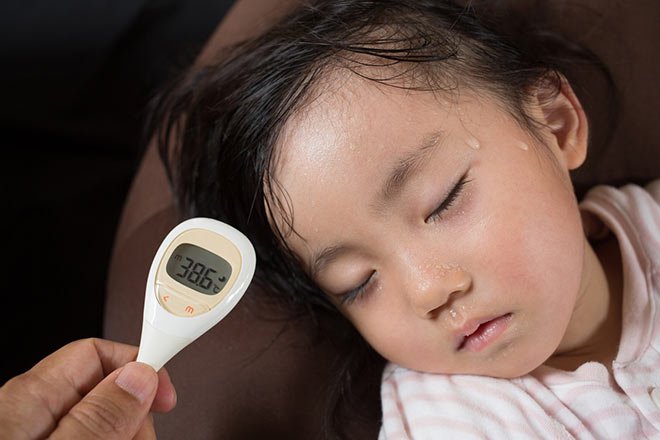
Nhiễm trùng huyết có các triệu chứng tương tự với sốt rét tái phát
Some other common infections also have symptoms similar to recurrent malaria, for example:
Sepsis
Entering the body through the skin, digestive system, urinary system ... causing toxicity heavy. Manifested by many chills during the day, but the fever does not have 3 distinct phases and successive decreases in temperature like malaria. Blood tests showed elevated leukocytes and neutrophils; high erythrocyte sedimentation rate as well as blood cultures containing pathogenic bacteria.
Urinary tract infections
Clinical symptoms are usually continuous fever, which may be intermittent but not periodic; accompanied by symptoms of urinary disorders, examination has painful points in the urinary organs. Urinalysis shows red blood cells, white blood cells, and granulosa casts, while X-ray or ultrasound can show urinary tract stones.
Inflammation of the biliary tract
Often pain in the biliary tract, gallbladder or liver, accompanied by continuous fever and many chills during the day. Patients with severe poisoning will have yellowing of the skin and eyes. Laboratory tests showed a high leukocyte count and high erythrocyte sedimentation rate. Ultrasound may show stones or thickening of the biliary tract and gallbladder.
Liver abscess
Patient has liver pain, palpable liver enlargement, signs of liver fibrillation and positive Ludlow; when ultrasound easily detects dilution.
To overcome the recurrence of malaria, patients and doctors at health facilities need to understand the cause of malaria recurrence, and at the same time ensure the principles of treatment. Patients are not allowed to voluntarily quit treatment, or take the wrong medicine, in the full dose as prescribed. For the doctor, he must strictly follow the prescribed regimen, and at the same time advise the patient to cooperate in treatment. It should be noted that recurrent malaria is easily misdiagnosed with other diseases and vice versa.
For detailed advice about the disease, please come directly to Vinmec health system or book online HERE.
MORE:
How to reduce malaria in adults Tests for malaria parasites Identify signs of severe malaria
Sepsis
Entering the body through the skin, digestive system, urinary system ... causing toxicity heavy. Manifested by many chills during the day, but the fever does not have 3 distinct phases and successive decreases in temperature like malaria. Blood tests showed elevated leukocytes and neutrophils; high erythrocyte sedimentation rate as well as blood cultures containing pathogenic bacteria.
Urinary tract infections
Clinical symptoms are usually continuous fever, which may be intermittent but not periodic; accompanied by symptoms of urinary disorders, examination has painful points in the urinary organs. Urinalysis shows red blood cells, white blood cells, and granulosa casts, while X-ray or ultrasound can show urinary tract stones.
Inflammation of the biliary tract
Often pain in the biliary tract, gallbladder or liver, accompanied by continuous fever and many chills during the day. Patients with severe poisoning will have yellowing of the skin and eyes. Laboratory tests showed a high leukocyte count and high erythrocyte sedimentation rate. Ultrasound may show stones or thickening of the biliary tract and gallbladder.
Liver abscess
Patient has liver pain, palpable liver enlargement, signs of liver fibrillation and positive Ludlow; when ultrasound easily detects dilution.
To overcome the recurrence of malaria, patients and doctors at health facilities need to understand the cause of malaria recurrence, and at the same time ensure the principles of treatment. Patients are not allowed to voluntarily quit treatment, or take the wrong medicine, in the full dose as prescribed. For the doctor, he must strictly follow the prescribed regimen, and at the same time advise the patient to cooperate in treatment. It should be noted that recurrent malaria is easily misdiagnosed with other diseases and vice versa.
For detailed advice about the disease, please come directly to Vinmec health system or book online HERE.
MORE:
How to reduce malaria in adults Tests for malaria parasites Identify signs of severe malaria
This article is written for readers from Sài Gòn, Hà Nội, Hồ Chí Minh, Phú Quốc, Nha Trang, Hạ Long, Hải Phòng, Đà Nẵng.

